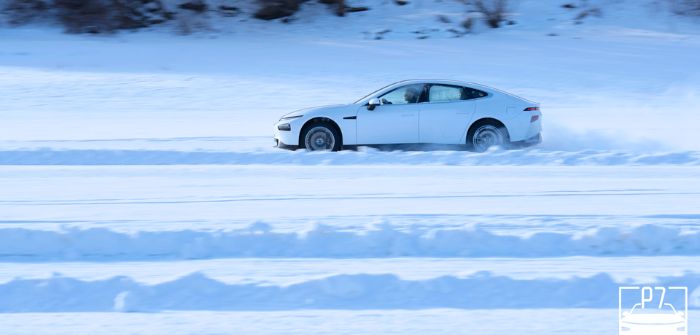The Xpeng P7 has just completed a rigorous set of extreme weather tests in China to prove the capability of its powerful dual-motor 4WD system.
Xpeng says that the P7 performed exceptionally well at the Red River Valley Automotive Test Centre in Heilongjiang Province in a series of winter tests on the nationally famous white track, undertaking a single-axis ice surface detachment test in which the P7 took only 1.5 seconds before it gained traction to drive off the icy surface.
The car maker says this is made possible by the P7’s 4WD lateral stability monitoring systems, meaning the vehicle is able to achieve an optimal torque distribution in just 0.3 seconds by triggering the ESP, thus improving stability and performance in low-grip situations such as ice and snow, creating a safer driving experience.
When compared to previous AWD systems, the P7’s new dual-motor setup can intelligently control the torque of both the front and rear wheels separately, allowing it to seamlessly distribute the torque ratio from 0-100%. This ensures that the vehicle correctly gauges the power needed to achieve consistent traction in a multitude of weather conditions.
The series of extended tests were carried out over an entire winter season in China, where the car and team faced an average ambient temperature of -30°C. Other tests involved the charging of the Xpeng’s latest 80.87kWh prismatic battery pack in these extremely low temperature environments.
Alongside these figures the P7 features an advanced battery thermal management system allowing the vehicle to maximize its driving range through the use of high-temperature cooling and low-temperature heating and insulation, minimizing the impact of external temperatures on the battery packs.
The vehicle also uses China’s first external water-cooling system paired with a real-time temperature assessment system to manage the core temperature of the IPU, allowing the heat difference between battery cells to be controlled within 3°C of one another.
With an energy density of over 160Wh/kg and the capability for the battery to be charged from 30% to 80% in 28 minutes, Xpeng said that with a full charge the RWD version of the P7 can achieve a range of more than 650km (403 miles), while the 4WD model can reach more than 550km (341 miles).
Over a total period of two years and with a team comprising German and Chinese engineers, the P7 has undergone multiple chassis adjustments and culminated hundreds of thousands of test kilometers across the world, including Spain, the USA and New Zealand.


